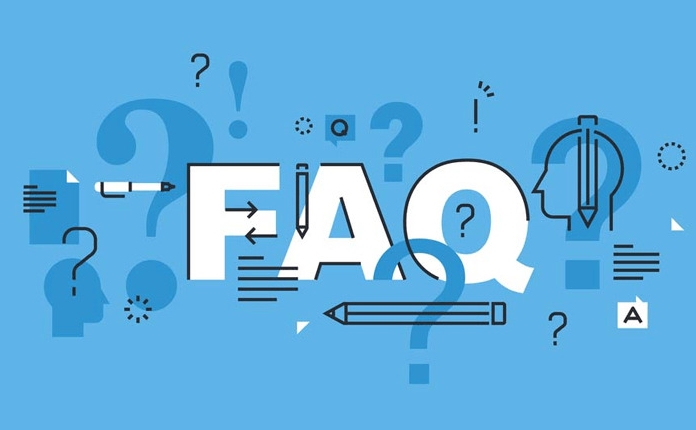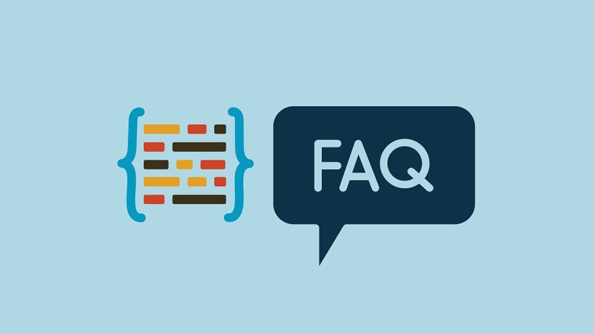The key to connecting to a network drive is to clarify the access path and permissions, and select the corresponding operation steps according to the system. First, you need to confirm the target address, such as the company server, NAS or LAN shared folder, Windows uses the \IP\sharename format, Mac searches through the Finder's "Network" and enterprise resources need to contact the IT department to obtain information and ensure access permissions; Windows operations include opening the Explorer, clicking "Mapping Network Drive", selecting the drive letter, entering the path, checking the automatic reconnection, and using different credentials to log in or clear the old connection if necessary; Mac press Command K through the Finder to enter the "Connect Server", enter the smb://IP/sharename, selecting the user or guest mode connection, and removing the old record if there is an error. Common problems are mostly caused by network blockage or account errors, and checking these steps can usually be solved.

Connecting to a network drive is actually not difficult. The key is to be clear about the path and permissions you need to access. Simply put, it is to use a folder on a LAN or remote server as a local hard disk.

Find the target address
Before you start mapping, you must first determine where you want to connect. This location is usually a folder shared by a company server, NAS device, or other computers within the same LAN.
- You can access it in the format of
\\IP地址\共享名on Windows - Mac users can find it through the "Network" sidebar in "Findor"
- If it is an internal resource of the enterprise, you may also need to contact the IT department to obtain a specific path
Remember to confirm that you have permission to access this location, otherwise the content will not be opened even if you connect.

How to operate on Windows
The Windows system is very intuitive to set up and can be completed in just a few steps:
- Open this PC or Explorer
- Click Computer > Map Network Drives on the top menu
- Select a drive letter (such as Z:, Y:, etc.)
- Enter the correct network path, for example
\\192.168.1.100\SharedFolder - Check "Reconnect when login", so that you can automatically connect after restarting.
If the prompt does not have permission, you can click "Use different credentials" to enter your username and password. Sometimes, the system will cache old account information. At this time, you can clear the previous connection first and try again.

It can be easily done on Mac
The way Macs map network drives is slightly different, but not complicated:
- Open Finder, press Command K or select Go to > Connect to Server from the menu bar
- Enter
smb://IP地址/共享名, and click "Connect" - You can choose to register a user or guest mode when logging in
If you have connected the same address before but have an error, you can first click the address in the list below, and then click the "Remove" button to clean up the old records. After the connection is successful, the corresponding icon will usually appear on the desktop. If it is disconnected, you can right-click to cancel the mount from the "Findor" sidebar.
Basically these steps. Although it seems a bit too many, it is very fast to operate. As long as the path is correct and the permissions are sufficient, you can basically connect to it at one time. Occasionally, if you encounter problems, it is mostly because the network is not connected or the account password is incorrect. Checking these places can usually solve it.
The above is the detailed content of how to map a network drive. For more information, please follow other related articles on the PHP Chinese website!

Hot AI Tools

Undress AI Tool
Undress images for free

Undresser.AI Undress
AI-powered app for creating realistic nude photos

AI Clothes Remover
Online AI tool for removing clothes from photos.

Clothoff.io
AI clothes remover

Video Face Swap
Swap faces in any video effortlessly with our completely free AI face swap tool!

Hot Article

Hot Tools

Notepad++7.3.1
Easy-to-use and free code editor

SublimeText3 Chinese version
Chinese version, very easy to use

Zend Studio 13.0.1
Powerful PHP integrated development environment

Dreamweaver CS6
Visual web development tools

SublimeText3 Mac version
God-level code editing software (SublimeText3)

Hot Topics
 Selected Java JPA interview questions: Test your mastery of the persistence framework
Feb 19, 2024 pm 09:12 PM
Selected Java JPA interview questions: Test your mastery of the persistence framework
Feb 19, 2024 pm 09:12 PM
What is JPA? How is it different from JDBC? JPA (JavaPersistence API) is a standard interface for object-relational mapping (ORM), which allows Java developers to use familiar Java objects to operate databases without writing SQL queries directly against the database. JDBC (JavaDatabaseConnectivity) is Java's standard API for connecting to databases. It requires developers to use SQL statements to operate the database. JPA encapsulates JDBC, provides a more convenient and higher-level API for object-relational mapping, and simplifies data access operations. In JPA, what is an entity? entity
 How to use ORM (Object Relational Mapping) in FuelPHP framework?
Jun 05, 2023 am 08:31 AM
How to use ORM (Object Relational Mapping) in FuelPHP framework?
Jun 05, 2023 am 08:31 AM
With the continuous development of web applications, using frameworks has become the first choice for developers. FuelPHP is a powerful web application framework, and ORM (Object Relational Mapping) is an important feature of FuelPHP. ORM has many advantages, including simplicity and ease of use, high development efficiency, and strong readability. It is also an indispensable part of the application framework. Next, we will share how to use ORM in the FuelPHP framework. 1.What is ORM? ORM stands for ObjectRelationa
 In-depth analysis of MyBatis one-to-many query configuration: exploring mapping relationships
Feb 25, 2024 pm 02:57 PM
In-depth analysis of MyBatis one-to-many query configuration: exploring mapping relationships
Feb 25, 2024 pm 02:57 PM
Detailed explanation of MyBatis one-to-many query configuration: in-depth analysis of mapping relationships MyBatis is a popular Java persistence layer framework. Its flexible SQL mapping configuration makes operating the database simple and efficient. In actual development, we often encounter one-to-many query requirements, that is, one entity object is associated with multiple sub-entity objects. This article will delve into how to configure one-to-many query in MyBatis, parse the mapping relationship, and give specific code examples. One-to-many relationships are mapped in the database, and one-to-many relationships are
 PHP PDO data type mapping: make your data typed
Feb 19, 2024 pm 12:00 PM
PHP PDO data type mapping: make your data typed
Feb 19, 2024 pm 12:00 PM
What is PDO data type mapping? PDO (PHP Data Objects) provides an abstraction layer that simplifies interaction with different databases. PDO data type mapping enables us to map database field types to PHP data types. This provides a consistent, typed, and secure database interaction experience. Why use PDO data type mapping? Typed data: It enforces PHP data types, preventing unexpected conversions and potential errors. Consistency: It ensures consistent data interpretation across different database types. Security: It prevents SQL injection and other security vulnerabilities by validating input types. Performance: It optimizes query performance because the database can optimize fields according to the correct type. Implement PDO data type mapping
 Python programming: Another way to use dictionary chain mapping (ChainMap), play it!
Apr 11, 2023 pm 03:04 PM
Python programming: Another way to use dictionary chain mapping (ChainMap), play it!
Apr 11, 2023 pm 03:04 PM
Preface Collection is a specialized container data type (Container Datatype) that can replace Python's general built-in containers, such as dict, list, set, and tuple. A container is a special purpose object that can be used to store different objects. It provides a way to access the contained objects and iterate over them. Python provides the collections module that implements container data types. In this series of chapters, we will learn about the different types of collections in the Collections module, including: ChainMapCounterDequeDefaultDictNamedTupleOrderedDictUserDictUserLi
 PHP SPL data structures: the ultimate weapon for data management
Feb 20, 2024 am 11:30 AM
PHP SPL data structures: the ultimate weapon for data management
Feb 20, 2024 am 11:30 AM
Introduction to PHPSPL Data Structure Library The PHP Standard Library (SPL) contains a rich set of built-in data types called data structures. These structures provide efficient and flexible management of complex data collections. Using SPL data structures can bring the following benefits to your application: Performance Optimization: SPL data structures are specifically designed to provide optimal performance in a variety of situations. Improved maintainability: These structures simplify the handling of complex data types, thereby improving code readability and maintainability. Standardization: SPL data structures conform to PHP programming specifications, ensuring consistency and interoperability across applications. SPL Data Structure Types SPL provides several data structure types, each with its own unique characteristics and uses: Stack (St
 Understand what are the commonly used data structures in Go language
Mar 29, 2024 pm 12:30 PM
Understand what are the commonly used data structures in Go language
Mar 29, 2024 pm 12:30 PM
In the process of learning a programming language, it is very important to understand commonly used data structures. As a modern programming language, Go language also provides many commonly used data structures to help programmers process data more efficiently. This article will introduce commonly used data structures in the Go language and provide specific code examples. Array: Array is a basic data structure used to store fixed-size elements of the same type. In Go language, the size of an array is fixed and cannot be changed. The following is a sample code: package
 Six questions about object-oriented Python
Apr 11, 2023 pm 08:43 PM
Six questions about object-oriented Python
Apr 11, 2023 pm 08:43 PM
This article is written for friends who are new to Python, trying to explain the following questions: What are classes and objects? Now that there are functions, why do we need classes? How does Python define public/protected/private attributes/methods? Is private really private? , what is the purpose of doing this? How to define class functions, member functions, and static functions, and what are their functions? Classes can be inherited, but how to make subclasses have to rewrite the functions of the parent class before they can be used, otherwise an exception will be thrown? There is the following inheritance relationship: A, B(A), C(A), D(B, C) So when D is initialized, what is the initialization order of A, B, and C? Will A be initialized twice? 1. What are classes and objects? Let’s talk about objects first. Objects usually






